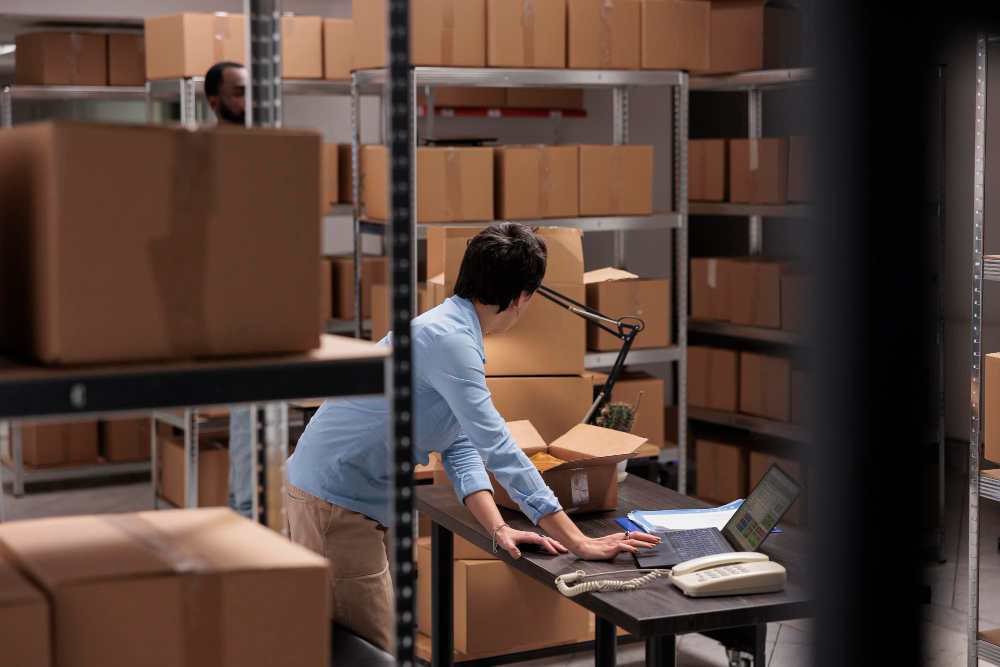Why Technology Is the Secret Weapon for Leading Warehousing Companies

The industry of warehousing has gone through a massive revolution over the last few years, mostly due to technological factors. Starting with automation to data analysis, technologies have changed the face of warehousing and effectively enhanced the speed of its functioning.
In this blog, let us explore some of the ways that technology continues to transform the demand for leading warehouse companies.
1. Automation: Speed and Accuracy
One of the most significant changes in modern warehouses is the widespread adoption of automation. Automated systems, such as robotic pickers, conveyers, and sorters, are now able to perform tasks that were once done by hand, drastically increasing speed and accuracy.
For example, robots can now autonomously pick items from shelves and transport them to packaging areas, reducing the time spent on manual labor and lowering the risk of human error. These systems use artificial intelligence (AI) to constantly improve their efficiency, allowing for smarter decision-making within the warehouse. This kind of automation has drastically reduced operational costs and time-to-delivery, providing companies with a competitive edge in the fast-paced logistics industry.
2. Internet of Things (IoT): Real Time Tracking and Visibility
IoT devices have found their utility in warehouses, offering full control and complete transparency as well as real-time monitoring. Wearable and implanted sensors are used in storage systems, equipment, and commodities to provide comprehensive and consistent information to the managerial level, allowing for monitoring the warehousing of goods, functioning of machinery, and management of spaces in which equipment is located.
IoT can help keep track of temperature and humidity and store stock levels for warehousing – something important for perishable goods or medications.
FAQ’s
1. Can I store anything in leased storage space?
- No, most leases prohibit hazardous materials, illegal items, and flammable substances. Always check the rules.
2. Are there additional fees beyond the lease cost?
- Some leases may include fees for maintenance, utilities, or security services. Clarify these before signing.
3. What security measures are in place for leased storage spaces?
- Facilities often have features like CCTV, access control, and on-site staff to ensure safety.
4. Can I upgrade to a larger space if needed?
- Yes, many facilities allow upgrades based on availability and adjusted lease terms.
3. Artificial Intelligence (AI) and Machine Learning: Smarter Decisions
AI and machine learning are strategic in improving decision-making for warehouse management. Since it is capable of computing large volumes of data, it can forecast demand patterns and come up with the best picking patterns within warehouses.
For instance, it can be predicted which products should be ordered so as to avoid stockouts in warehouses. Besides, they have shown that they operate by learning from previous data and making suitable decisions that add to the efficiency of the warehouse. Therefore, warehouses can be made more cut-responsive, which implies that they can be adapted better to market conditions, leading to less wastage and more satisfied customers.
4. Warehouse Management Systems (WMS): Streamlined Operations
A Warehouse Management System (WMS) is a software application that has to be implemented in a warehouse environment and that supports all the functions of a warehouse. Current WMS systems rely on solutions that are hosted in the cloud to provide real-time information on stock, orders, and shipments.
As a result, the WMS structure helps to increase space control and visibility, decrease operational costs, and enhance order accuracy. Also, they can help with where to go, which adds another layer to where fast speeds and deliveries are possible.
5. Augmented Reality (AR): Enhanced Worker Productivity
While augmented reality (AR) is often associated with entertainment and gaming, it’s also making its way into warehouse operations. Workers can use AR glasses or devices to receive real-time information about the location of items, the most efficient picking route, or the status of an order.
This hands-free guidance makes the picking process faster and reduces mistakes. For example, an AR-enabled worker might receive a visual overlay showing the exact shelf location of an item, along with a barcode to scan, further speeding up the order fulfillment process.
CONCLUSION
Technology is transforming warehouses from the inside out. With automation, AI, IoT, drones, and other innovations, warehouses are becoming faster, smarter, and more efficient than ever before. These advancements not only streamline operations but also offer businesses the agility and scalability needed to stay competitive in an ever-evolving marketplace.
For companies looking to thrive in the modern world of logistics, embracing these technological innovations is not just an option—it’s a necessity. The future of warehousing is here, so choose the leading warehousing company in India, Scalar today!
